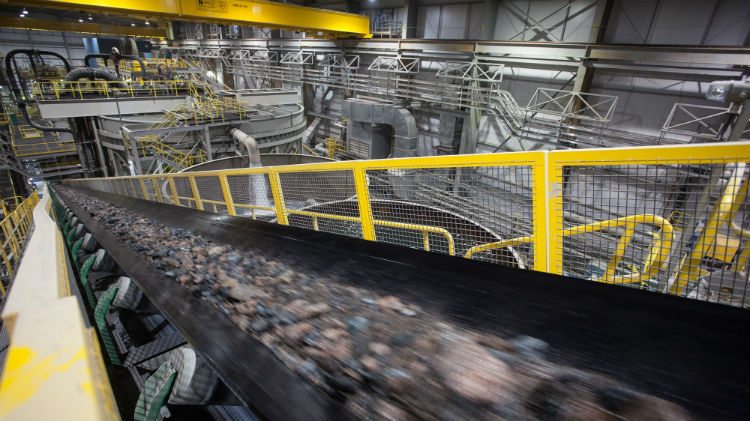Nearly 160 guests flew from Yellowknife, Calgary and even Singapore Tuesday to get a first look inside the Gahcho Kué mine, 280 kilometers northeast of Yellowknife.
100.1 The Moose was at the grand opening and toured what’s now being called one of the largest diamond mines in recent history.
Our first look at #GahchoKue 50-34 pit @TheMooseCJCD pic.twitter.com/SB7OFYLqg9
— Gabriela Panza-Beltrandi (@GabrielaPanza) September 20, 2016
This is what the inside of a processing plant looks like #GahchoKue @TheMooseCJCD pic.twitter.com/qZ5EkdeLXE
— Gabriela Panza-Beltrandi (@GabrielaPanza) September 20, 2016
“It’s been an emotional day for everyone,” said Kim Truter, CEO of Gahcho Kué’s operator De Beers Canada.
Truter says Gahcho Kué’s ramp-up has been one of the best the company has ever had.
“Here we are, nearly at the end of September and already we’re way ahead of budget.
“Everything’s sort of worked. The process plant has worked, the mine has worked, the miners worked, the people have worked… It’s been a very good start.”
RELATED: Gahcho Kué could contribute $6.7 billion to NWT economy
The property was first discovered in 1995, and nearly 21 years later finally opened its doors.
Gahcho Kué provided an estimated $440 million boost to the territorial economy between 2007 and 2015, according to De Beers’ socio-economic impact report.
Between 2014 and August 2016 alone, the company reportedly spent $405 million working with NWT companies. But De Beers says 90 per cent of the mine’s impact is yet to come.
In their most recent impact report, De Beers says $5.7 billion in gross value added (GVA) is estimated to be added to the NWT economy over the mine’s expected lifetime of 13 years.
“The activities at Gahcho Kué (to date) have generated $20 million in payments to government,” read the report, with 62 per cent of payments being driven by employee income taxes.
An additional $4 million was contributed with support to First Nations through impact and benefit agreements.
Gahcho Kué shares ownership between De Beers (who operate the site and own 51 per cent) and Mountain Province Diamonds (who discovered the mine in 1995 and own 49 per cent).
Sources previously told 100.1 the Moose that De Beers expects to eventually employ 530 people this year. That compares to the almost 1,200 the company expects to employ annually over the mine’s lifetime.
While they could not comment on the exact number of people currently working at the mine, of the employees De Beers currently has there, 45 per cent are from the North, 28 per cent of which are of aboriginal descent.
De Beers was also behind Snap Lake mine before its closure in December. Between 2006 and December 2015, the Snap Lake mine supported 1,320 jobs in the North and contributed $1.7 billion to the territory and $2.2 billion to Canada as a whole.
RELATED: De Beers Canada puts Snap Lake diamond mine up for sale
Approximately 200 employees from that mine have now been transferred to Gahcho Kué.
Though it opened yesterday, Gahcho Kué has been operational since the beginning of August, and in seven weeks they’ve recovered approximately 140,000 carats in diamonds according to processing plant manager Serge Benoit.
“We have a mixture of gem quality product and non-gem quality product (so far),” Benoit said. “We have some good-quality product coming out of this mine.”
In their latest impact report, De Beers Canada said, “Gahcho Kué is expected to produce approximately 54 million carats from an estimated 35 million tonnes of ore over the life of the mine” based on the company’s currently planned activities.
The first bunch of diamonds has already been sent for their first evaluation in Yellowknife, Truter says. He expects Gahcho Kué’s finished diamonds to hit the market within weeks.
“This mine has survived (20 years), and I think it’s going to be in the future a very competitive mine,” Truter said. “It is a very competitive mine not just in Canada but globally.”




